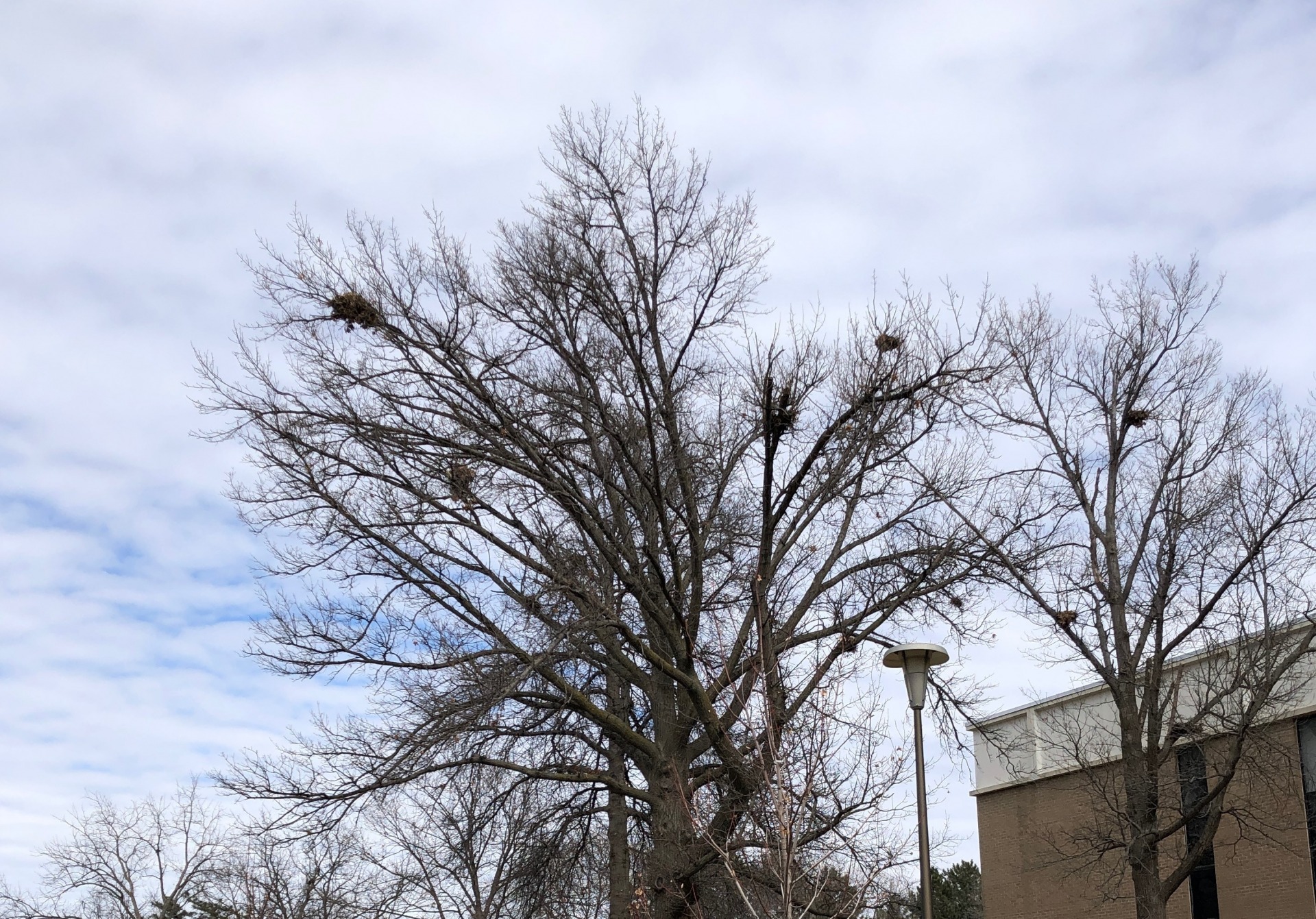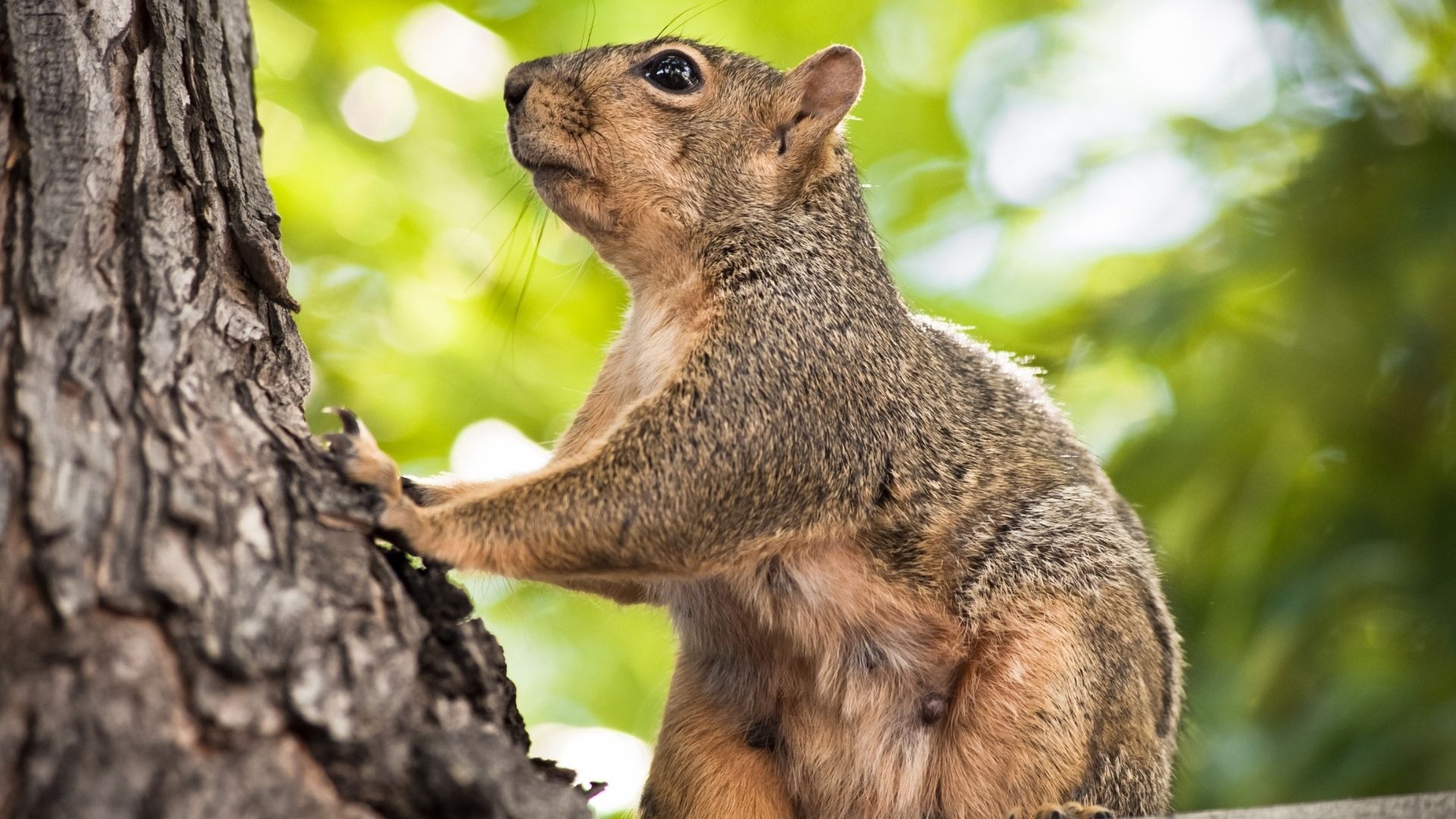Although it still feels very much like winter around here, spring has sprung—for the squirrels anyway. Tucked away, high up in the tree tops and deep inside hollows, fox squirrels (Sciurus niger) are being born. It seems an unlikely time for squirrels to give birth, and almost as unlikely as timing is the location of their nurseries.
Fox squirrels will nest in tree cavities if the entrance hole is small enough to prevent predators from entering. However, most urban squirrels make their nests, called dreys, high up in the tree tops, usually 30 to 45 feet off the ground! Why so high? The height and thinner branches closer to the top of the tree provide protection from predators like raccoons and opossums. Dreys are easy to spot this time of year, and although they appear to be a precariously-placed, hap-hazard ball of leaves, some serious engineering goes into their construction. Squirrels bend and weave green twigs into a spherical shape at the juncture of small branches. Then, they fill it in with layers of leaves and other loose material such as vines, grass, bark, and even human litter like plastic bags and paper. Squirrel dreys are surprisingly secure and waterproof. Multiple nests are commonly built as a refuge from predators and as back-up in the event of a flea infestation.

Fox squirrels will typically produce two litters of 2 to 5 pups a year. In Pottawattamie County, as crazy as it seems, the first litters appear in the latter half of February. Baby fox squirrels are among the slowest rodents to mature. Most of them do not become independent until four months of age. The early timing of the first litter gives young squirrels an advantage when they venture out to find their own territory. Good territory with a reliable food source is important for winter survival. The early timing also gives mother squirrels the opportunity to produce and raise a second litter, usually in July. Young squirrels from the second litter will be mostly independent by fall but will often share nests with their mother in the winter.
Despite their solid construction, high winds and ill-timed tree trimming will occasionally bring down squirrel nests. If this happens, and the baby squirrels are unharmed, the mother squirrel has the ability to retrieve her babies and relocate them to one of her spare nests. If you find a fallen squirrel nest with babies, you can help. If the babies are unharmed, place them and any remaining nest material in a box along with a hot water bottle to keep the babies warm. During daylight hours, place the box with the babies at the base of the tree from which they came. Keep domestic dogs and cats away, and give the mother squirrel several hours to return. Squirrels are diurnal (active during the day), so if the mother squirrel does not return for her babies before dark, retrieve them and seek the help of a licensed wildlife rehabilitator. You can find a list of licensed wildlife rehabilitators in Iowa HERE.

Fun facts about baby fox squirrels: They are born without hair or teeth, their eyes are closed, and they are completely dependent upon their mother for around-the-clock care. Their eyes open between 4 and 5 weeks. Their bottom teeth emerge around 3 weeks and the top follow around 4 weeks. Weaning happens between 8 and 10, and soon after, the young squirrels will begin their first adventures outside of the nest.
Next BlogStay connected with Pottawattamie Conservation.
Subscribe to our e-Newsletter